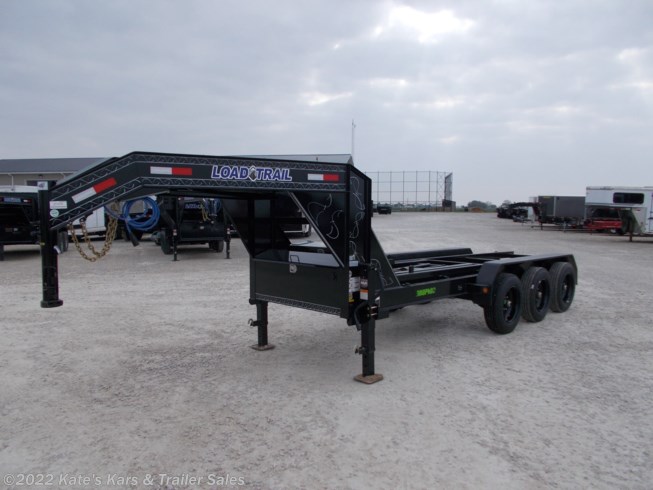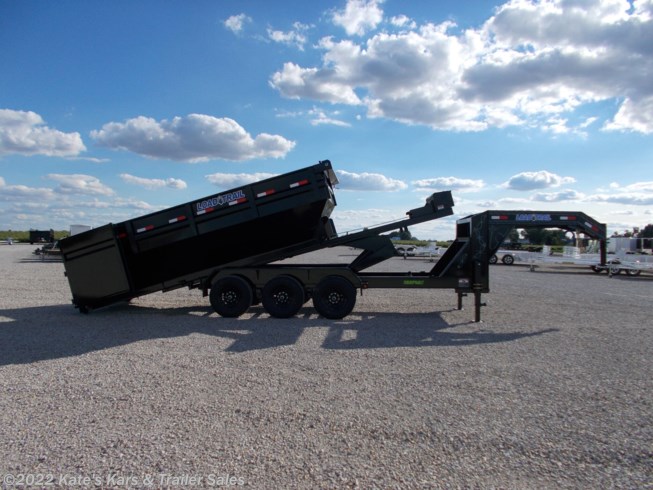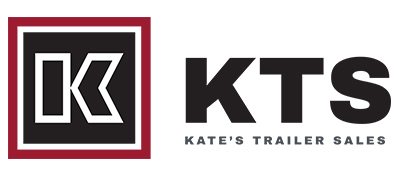If you have a pickup or a truck with a flatbed or service body, you most likely can tow a gooseneck or a bumper pull trailer. However, is there any advantage to towing a gooseneck versus a bumper pull trailer? As always, it comes down to what you need your trailer to do and your personal preference. Even though gooseneck trailers tend to be pricier, the cost pays off with their strength and stability over bumper pulls.
Gooseneck Trailers vs. Bumper Pull Trailers
Is bigger always better? Well, bigger does mean stronger in the world of trailers. Goosenecks can be wider, longer, heavier and, of course, more expensive! However, nothing will serve your heavy-duty hauling better than a gooseneck trailer, which is why they remain sought after in the trailer market. With the proper hitch and towing package, the sky is the limit with what you can tow behind your pickup truck! Let’s dig into what goosenecks are and where they outshine bumper pull trailers.

What is a Gooseneck Trailer?
Gooseneck trailers have trailer tongues with an unmistakable long arched neck design at the front. This “gooseneck” shaped trailer tongue allows it to be hitched in the bed of a pickup with the truck’s tailgate closed. A bumper pull trailer has a simple straight trailer tongue and coupler which hitches to the bumper of a car, van, SUV or truck.
What is a Gooseneck Hitch?
A gooseneck hitch is the assembly typically located beneath the truck bed centered above the rear axle. You’ll find many service bodies and pickup flatbeds come preinstalled with gooseneck hitches. If a truck doesn’t have one, it can be installed at any time. When installed, usually the hitch ball can be flipped upward when ready for use. Bumper pull hitches are attached to the bottom rear of the vehicle’s frame. The hitch mount and ball are connected to the square shaped receiver tube beneath the bumper.
What are the Advantages of Gooseneck Trailers?
Goosenecks can be bigger, can hold heavier and larger cargo, can make tighter turns, and yield more stability when being pulled compared to bumper pull trailers. However, bumper pulls can carry a respectable payload, are cheaper, can be towed by any type of vehicle and are easier for beginners to tow.
What are the Disadvantages of Gooseneck Trailers?
Goosenecks have few disadvantages other than cost and the loss of pickup bed space to accommodate the trailer when hitched. In comparison, bumper pull trailers lack in load capacity, are shakier if cargo is not balanced, and take wider turns around corners.
How Much Can a Gooseneck Trailer Tow?
Gooseneck trailers can be made to tow 30,000 pounds or more! These trailers will naturally cost more as they are bigger and heavier to handle heavy-duty tasks. If you are looking to get a lightweight job done cheaper, bumper pull may be better for you. However, the maximum you can haul on a bumper pull trailer is around 20,000 pounds. Whether you decide to go with a bumper pull or gooseneck trailer for sale, you’ll get a strong vehicle.

Is it Easier to Pull a Gooseneck or Bumper Pull Trailer?
Gooseneck trailers are easier to tow than their bumper pull counterparts in that they balance the load better and make tighter turns. Goosenecks won’t wobble or sway as much as bumper pulls. This is because the weight of the trailer is placed on the rear axles, rather than the bumper. As a result, sharper turns can be made with goosenecks, giving them better drivability then bumper pull trailers.
Is a Gooseneck Trailer the same as a Fifth Wheel?
Although both share the need of a pickup as the tow vehicle, fifth wheels and gooseneck trailers are not the same. The biggest difference is the way they hitch and towing capacity. Fifth Wheels weight capacities can go from 16,000 to a max of 30,000 pounds. Unlike goosenecks, they can’t go past the 30,000-pound limit.
Fifth wheel hitches use closable jaws or a locking bar to secure a kingpin to a pivoting headplate. This pivoting headplate allows for a smoother pull of the trailer, which is why it’s preferred for RVs and horse trailer applications over a gooseneck style. The only disadvantage other than weight capacity is that the fifth wheel hitch takes up much more space than the simple hitch ball of a gooseneck setup.

When is a Gooseneck Trailer a Better Choice?
When You Have a Pickup Truck
Yes, this is obvious. But, not only will you have to have a pickup truck, you’ll need the gooseneck hitch installed if it’s not already. That means you’ll need to be willing to have a whole drilled in the truck bed to accommodate the hitch ball.
When You Haul Heavy Loads Long Distances
If you are looking for a trailer that naturally balances better and carries large, heavy cargo for long hauls, a gooseneck trailer is a much better option. Also, if you need to pull something like a toy hauler with living quarters or tool storage, a gooseneck is a better option. Remember, goosenecks give stability and are less bumpy for motorized toys, tools and cargo.
When It’s in Your Budget
This may be another no-brainer, however, there are options to help get what you need within your budget. Take advantage of opportunities like trailer financing, trade-ins, or buying used may help you get more of what you want for an affordable price.
At Kate’s Trailer Sales, we carry a wide variety of enclosed, dump, open utility and gooseneck trailers for sale! We carry brands like Aluma, Load Trail, Midsota, Lamar and many more. Whether you are looking for new or used trailers for sale, contact our trailer dealership in Illinois if you have any questions.

